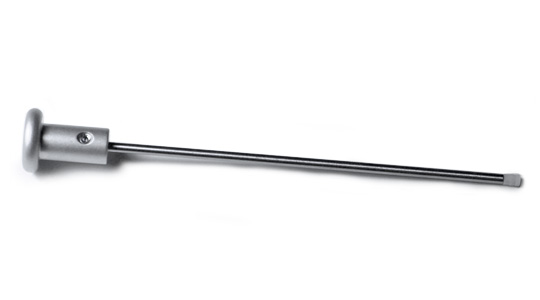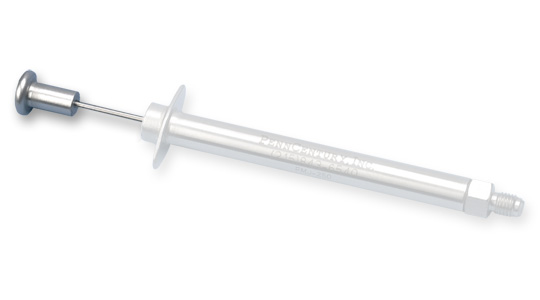
Model Number:
PLU-250
The plunger for the FMJ-250 High Pressure Syringe is made with a reinforced, anodized aluminum thumb button and stainless steel rod with a white PTFE (Teflon®) tip. It provides hydraulic pressure and gas-tight contact in the bore of the syringe.
After long continued use, or if the FMJ-250 High Pressure Syringe has been over-pressured due to a blockage in the tip of the MicroSprayer® Aerosolizer, the tip of the plunger can become worn. This may result in leaking from the proximal end of the syringe barrel, or a decrease in the quality and uniformity of the aerosol produced. Replacement plungers can be purchased without having to replace the entire syringe.
Download Instructions for Replacement Plunger for FMJ-250 High Pressure Syringe – Model PLU-250
- Condition the plunger before use: Before using a replacement plunger for the first time in your FMJ-250 High Pressure Syringe, you must condition the white PTFE (Teflon®) plunger tip. Wet the plunger tip with distilled water or a solvent. Do NOT use viscous oils to lubricate plunger tips. After wetting the plunger tip, insert the plunger into the barrel of the FMJ-250 High Pressure Syringe. Move the plunger in and out of the barrel approximately 10 times. Apply steady and even pressure; avoid twisting movements.
- Nothing prevents the plunger from being pulled out of the syringe entirely. In general, the user should become familiar with how far out they can pull the plunger before it comes out of the syringe barrel, and avoid pulling it out when in use, as this may increase the likelihood of getting air into the syringe barrel.
- Clean and maintain the FMJ-250 High Pressure Syringe and plunger according to the instructions provided. Avoid using corrosive, caustic or acidic cleaning solutions. Never soak the plunger in bleach.
- It is important to fully rinse the FMJ-250 High Pressure Syringe and plunger after use with deionized water solution. If you are using buffers or other salt (saline) solutions that are left in the fluid path overnight, salts may accumulate or crystallize in the system. Crystals may form and damage the syringe plunger tip.
- ALWAYS remove the plunger before autoclaving the FMJ-250 High Pressure Syringe. In general chemical methods of sterilization are less likely to cause damage to the syringe and plunger than autoclaving.

